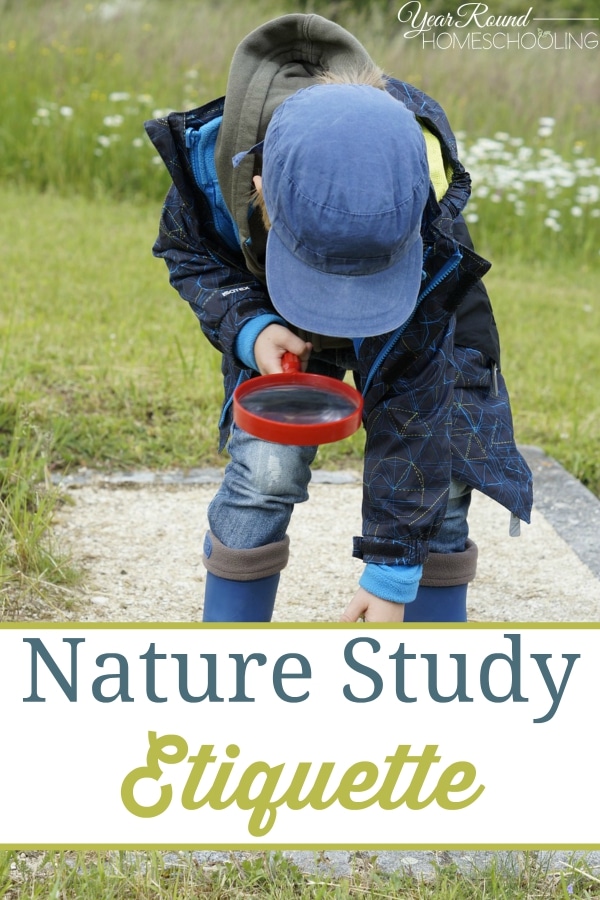Nature study is lots of fun, and one thing my family and I like to do is bring a specimen home to study it and have a better chance to draw it. When we lived in North Carolina, the last thing any of us wanted to do on an extremely hot and humid summer day was sit outside with the mosquitoes and attempt a nature journal drawing. We preferred, if we were able, to be able to bring a little sample home, perhaps a leaf or a flower, to draw inside.

The thing is, there are a few rules when it comes to collecting specimens, both for the sake of nature and the sake of others.
- Make sure you know what you’re collecting isn’t endangered or protected. The law states that you cannot pick flowers from any public land, and that includes roadsides. You also can’t pick or uproot anything at a public park, be it local, state, or national. It really limits where you can collect specimens, but it’s for a good reason. Flowers are, of course, the precursors to seeds, which allow plants to reproduce. If all the flowers get picked, there won’t be any more, which would mean no one would be able to enjoy them. Also, plants have root systems that help prevent soil erosion. So, if it’s not on your property, it’s best to leave things where you find them, unless you have permission. Even if you have permission, if it’s the only flower there, leave it for others to enjoy. (Even if it’s on your property, you can’t uproot it and bring it home.)
- It’s illegal to possess most of the feathers you find on the ground. Isn’t that bizarre? Unfortunately, it’s true. The Migratory Bird Treaty Act of 1918 states that we’re not to collect feathers, nests, or eggs from n
 ative migratory birds. There’s a great post about it here. No one’s going to care if you pick up a feather and take it home to draw it, but you’ll want to put it back outside. If your children protest (feathers are COOL!), explain that birds use feathers to line their nests so it will be used to keep baby birds toasty in their nests in the spring.
ative migratory birds. There’s a great post about it here. No one’s going to care if you pick up a feather and take it home to draw it, but you’ll want to put it back outside. If your children protest (feathers are COOL!), explain that birds use feathers to line their nests so it will be used to keep baby birds toasty in their nests in the spring. - Children impress me all the time with the critters they find and bring home. We’ve had insects, turtles, frogs, toads, and lizards (even snakes) as temporary visitors from time to time. The thing is, wild animals don’t adapt well to captivity, so be sure to set them free after a short time of observation.
As much fun as it is to study nature, we need to also be respectful and leave it where we find it, most of the time. Be prepared with your nature journal and pencils in your backpack because you never know what you’ll find! I’d love to have you visit me at Acorn Hill Academy, too, for nature study, Charlotte Mason and book discussions.
